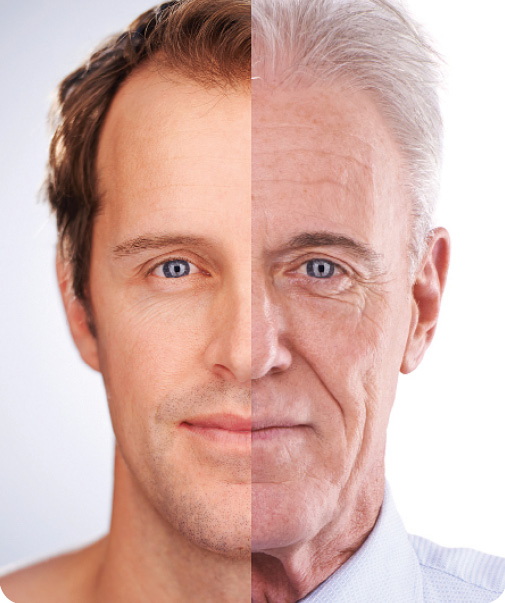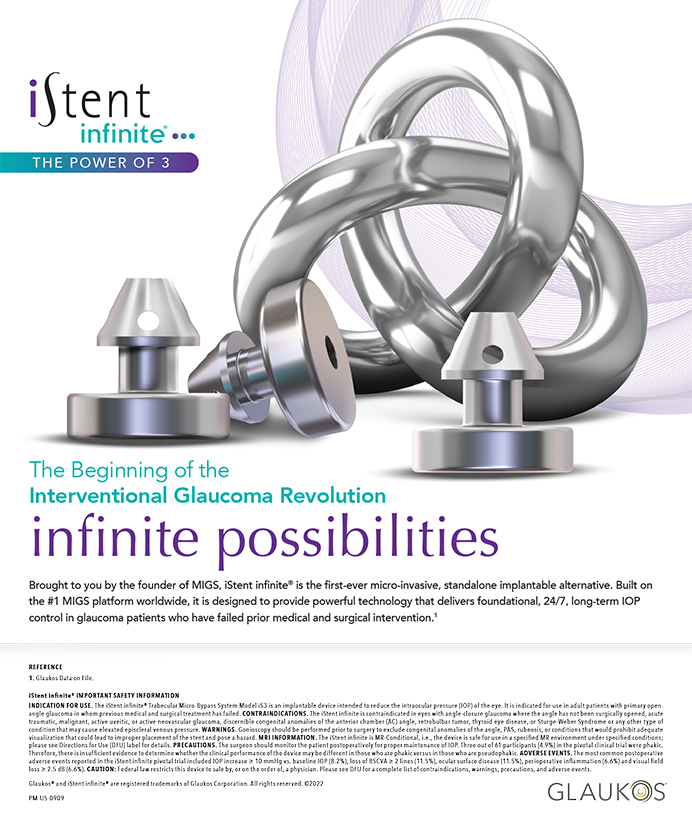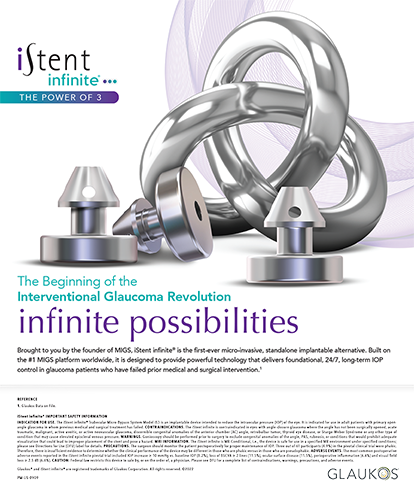
The face reveals age. Although aging is not a disease, our society has never accepted it well. In a time when people are living longer and healthier lives, this presents opportunities for eye care providers to focus on defying the effects of aging, particularly in the face.
The market for antiaging products and services has grown into a global industry estimated to be worth more than $260 billion in 2013.1 There has been exponential growth in the past several years. In the 21st century, people are embracing aging with more vigor than before, not taking a passive stance to its effects. Playing into our insecurities, the market is saturated with over-the-counter products, injections, and office treatments that aim to slow the aging of the face. Research has fueled the development of products that can both prevent and treat the aging of the face.
THE AGING FACE
The aesthetics of the face depends on the relationship of the bony skeleton to the overlying soft tissue. The dynamics of muscle, fat, and skin contribute to our appearance and how we age. The major forces that contribute to facial aging are gravity, soft tissue maturation, skeletal remodeling, muscular facial activity, and changes caused by solar exposure.2 Patients are most concerned with the lines, wrinkles, contour irregularities, and sun-related damage of the skin. The loss of collagen, gravitational pull, and weakening of soft tissue are all intertwined in how these effects appear on the face.
We can think of the face as divided in thirds. The upper third of the face is the forehead and the brow. The combination of gravity, loss of tissue elasticity, effect of facial expressions, and bone resorption causes the descent of our brows.2 The skin of our eyelids is the thinnest in the body. As the aging process occurs, further atrophy of the dermis occurs, along with weakening of the orbital septum that allows the intraorbital fat to herniate forward, creating “mounds.” Forehead lines and wrinkles deepen to counteract the ptosis of brow and upper lid. The excess skin, herniated fat pads, glabellar frown lines, and forehead lines all contribute to the aging face.
On a youthful midface, there is a seamless transition between the lower eyelids and the cheek. As we age, the bony orbit expands and ultimately changes the overlying soft tissue.3 This, in combination with ptotic orbicularis oculi, descending malar fat pads, and herniation of intraorbital fat pads, creates an irregular contour along the midface. The lower face also undergoes the downward pull of gravity. The descent of the platysma muscle, laxity of the skin, and herniation of the submental fat pad create the jowls and loss of definition along the jaw line.
There are factors of aging that we are not able to change: the genetics of our facial bony structure, the effects of gravity, and the effects of our facial expressions. However, there are other factors that can be altered to slow the process of aging. We live in an age in which, more than ever, nonsurgical options for treating an aging face are abundant.
Learn more about antiaging medicine and aesthetics.
The 20s
Although no one in his or her 20s thinks about aging, good habits developed in this decade of life can help prevent the early onset of aging. Because skin plays an important role in the aging process, good skincare is vital. This includes cleansing every day, good hydration, and protecting the face from the ultraviolet rays of the sun. Smoking can also accelerate the aging of the skin. Nicotinic acid decreases blood flow, and other chemicals in cigarettes reduce collagen and elastin to result in atrophy of the skin. In addition, the pursing of lips and squinting of the eyes associated with the act of smoking contribute to the formation of wrinkles.
Sun exposure is another factor in aging. Studies have shown that skin that undergoes the normal aging process differs from photodamaged skin. Histologically, the dermis of photodamaged skin shows chronic inflammation and telangiectasis that make the skin more irritated. These changes accelerate the loss of the normal elasticity and stretchability of the skin, resulting in lax skin that is prone to wrinkles.
The 30s
As early as the decade of the 30s, people can see fine wrinkles appear. These changes are more apparent in photodamaged skin. In addition to the preventive skin care routine people need in their 20s, the addition of collagen-boosting and exfoliation products in this decade can slow the aging effects of the sun and environmental factors. Exfoliation can reduce sebaceous glands that create enlarged pores. Collagen-boosting products rich in vitamin A such as retinol creams can help restore the natural tone of the skin.
The 40s
In their 40s, most people will notice a significant change in skin tone and the appearance of deeper wrinkles. Although there is controversy surrounding whether neurotoxin and dermal filler injections should be used early to prevent further deterioration, the use of these injections becomes more common in people in their 40s.
Age 50 and Beyond
People in the baby boomer generation spend more money on antiaging treatments than their counterparts in any other generation. In this age group, hyperpigmentation and wrinkles are the main concerns. A good skincare routine is still important, but people may also start looking into nonsurgical options to address some of these problems.
Various treatments, either in a spa setting or in a medical professional’s office, may offer rejuvenation of facial skin. Laser, intense light, radiofrequency, and ultrasound technologies all target collagen synthesis in the facial skin to reduce wrinkles and pigmentation and to restore the natural glow of the skin. Oxygen facials and microdermabrasion are also good adjunct therapies that can repair damaged skin.
At a Glance
• In one’s 20s, good habits can help prevent the early onset of aging. Good skin care, hydration, not smoking and protecting against sun exposure are all vital.
• People in the baby boomer generation spend more than any other demographic on anti-aging treatments. Laser, intense light, radiofrequency, and ultrasound technologies all target collagen synthesis in the facial skin to reduce wrinkles and pigmentation and to restore the natural glow of the skin.
The beauty of a face lies in the three-dimensional volume of its soft tissue. The importance of this is evidenced by the increasing market for injectable dermal fillers. Lost volume and elasticity of the skin can cause it to drape over the facial bony structure, resulting in the appearance of wrinkles and contour irregularities.
Injectable fillers are available with a variety of molecular weights and characteristics, and the array of choices allows ease of use. Injectable fillers can reduce static lines in the glabellar regions, tear trough, and nasolabial folds. They can reduce periorbital and perioral lines. Usually a neurotoxin such as botulinum toxin type A (onabotulinumtoxinA [Botox Cosmetic; Allergan]) is used in combination with fillers to relieve both static and dynamic lines.
If a patient’s problem is related to increased volume such as fat in the jowl region or herniated fat in the periorbital region, depending on the severity of the problem, fillers can be used in adjacent areas to smooth the transition. Deoxycholic acid (Kybella; Kythera Biopharmaceuticals), approved earlier this year by the FDA, is a fat emulsifier that can be injected in the submental region to reduce the appearance of a double chin.
SUMMARY
We live in a time in which there are good nonsurgical and surgical options to slow the effects of aging. Along with the knowledge to promote better skincare, healthy living, and an understanding of wellness, we have a wide array of treatment options to address the aging of the face. n
1. Anti-Aging Products and Services: The Global Market. May 2009. BCC Research, Wellesley, MA. www.bccresearch.com/
market-research/healthcare/antiaging-products-services-hlc060b.html. Accessed June 26, 2015.
2. Zimbler MS, Kokoska MS, Thomas JR. Anatomy and pathophysiology of facial aging. Facial Plast Surg Clin North Am. 2001;9(2):179-187.
3. Zide BM, Jelks GW. Surgical Anatomy of the Orbit. New York, NY: Raven Press; 1985:13-32.
Jenny Y. Yu, MD
• vice chair of clinical operations, associate program director, and assistant professor, University of Pittsburgh Medical Center, UPMC Eye Center, Department of Ophthalmology, Orbital, Oculoplastic, and Aesthetic Service
• yuj3@upmc.edu; (412) 647-2152



